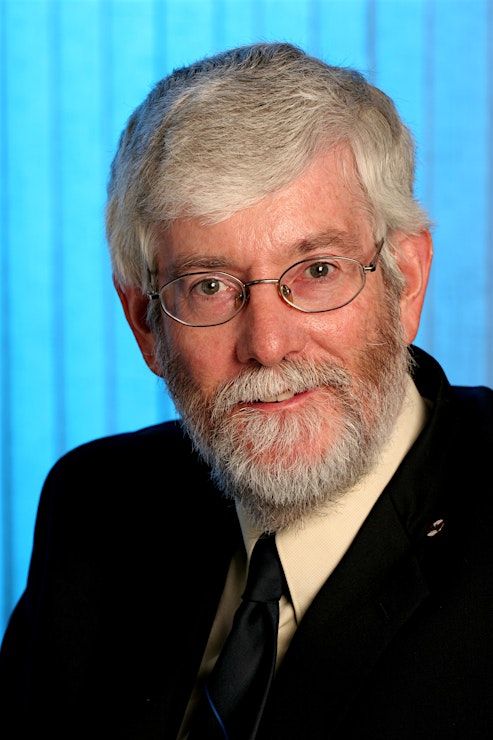
About this Event
Lecture :
- 5:00 PM – Cocktails and Socializing
- 6:00 PM – Dinner
- 7:00 PM -8:30 PM- Lecture
Abstract
The Lecture begins by defining what constitutes PFAS, why they are ubiquitous n our homes and, in our blood, the and health impacts. It explains why most PFAS end up in landfills and why they have emerged as a major challenge for the design of future landfills and their now well-established presence in landfill leachate raises major questions about the containment capacity of existing landfills given the Health Canada revised drinking water objectives published in August 2024 and the even more. stringent limits on groundwater impact in Ontario. This lecture explores research questions that arose from Rowe’s review of the PFAS Clean-up Plan for the former CFA Fiskville. The lecture discusses the subsequent 8 years of advances in research to address these questions related to the interaction of PFAS with barrier system materials, including establishing parameters for modelling potential impact on groundwater quality and the likelihood of meeting criteria as low as 4 ng/L. It discusses the probability of reaching regulatory criteria for PFAS with single and double composite liner barrier systems and a discussion of the implications of the selective capacity of a barrier system for controlling PFAS impacts, as well as the implications of the interaction of PFAS with geosynthetics with respect to their service life in the barrier system.
About the Speaker
R. Kerry ROWE, OC, Ph.D., D.Eng, DSc(hc), DHC,FRS, FREng, NAE, NAC, FRSC, FCAE, Dist.M.ASCE, P.Eng,
Professor R. Kerry Rowe was educated at the University of Sydney in Australia. From 1971 to 1974 he was a cadet engineer and from 1975 to 1978 a geotechnical engineer with the Commonwealth of Australia Department of Construction. Dr. Rowe then spent 21 years (1979-2000) as a professor at the University of Western Ontario, Canada. From 2000-2010 he served as Vice-Principal (Research) at Queen's University in Kingston, He is presently the Distinguished University Professor in the Department of Civil Engineering at Queen's University.
Professor Rowe’s research into what is now known as Geoenvironmental Engineering began shortly after he arrived in Canada in December 1978 and his interest in the safe disposal of waste was prompted by Pres. Carter’s declaration of a State of Emergency at love Canal in Niagara Falls, New York. This involved the movement of hundreds of people from their homes constructed adjacent to 21,000 tons of hazardous chemicals in drums buried in a hole in the ground. That motivation combined with the presence of Dr Bob Quigley, who had been be monitoring the migration of contaminants at number landfills in southern Ontario, led his first research modelling Bob Quigley’s data, building experimental methods for obtaining relevant parameters, and developing software specifically for landfill contaminant transport applications in the design of facilities to meet Ontario’s Reasonable Use Guideline. He worked to close the gap between hydrogeologist investigating and monitoring a site and many civil engineers who designed without any consideration of the interactions between civil engineering structure and site hydrogeology that was causing problems in the developing field of landfill design. He worked at the integration of hydrogeology and civil engineering in landfill design, particularly for hydraulic containment sites. He extended his interest in the use of natural materials by adding geosynthetics (including geotextiles, geomembranes, geogrids, geonets, etc.) to assist in the containment of contaminants in all types of landfills. He has worked on many municipal, hazardous, and low-level radioactive waste landfills as well as tailings storage facilities, heap leach pads, containment fluids that could cause an environmental impact in in Canada and around the world. He has also provided innovative solutions to cleaning up the environment in geographic locations ranging from the Arctic to the Antarctic. He is seen as one of the fathers of both geoenvironmental and geosynthetic engineering.
The impact of his work has led to his being elected a foreign member the US National Academy of Engineering and US National Academy of Construction, and one of the very few civil engineers to be elected a Fellow of the Royal Society (UK; world’s oldest and most distinguished scientific society). He has also been elected a Fellow of the Royal Academy of Engineering, Royal Society of Canada, and the Canadian Academy of Engineering, and as a Distinguished Member American Society of Civil Engineers. He has published extensively and is one of the world’s highest-cited geotechnical engineers. He has won almost 150 awards and given a large number of distinguished lectures including the Giroud Lecture (2002), Rankine Lecture (2005), Casagrande Lecture (2011), Karl Terzaghi Lecture (2017), and Mercer lecture (2019). In 2013, the International Society for Soil Mechanics and Geotechnical Engineering created the R. Kerry Rowe Lecture to honour his seminal contributions to the development of geoenvironmental engineering. In 2021, the International Geosynthetics Society created the Kerry Rowe Lecture to honour his seminal contributions to geosynthetic engineering. He was appointed an Officer of the Order of Canada in 2018 and in 2022 he was the inaugural winner of the NSERC Donna Strickland Prize for Societal Impact of Natural Sciences and Engineering Research recognition of the huge impact his research has had on environmental protection and especially on the longevity of people in developing countries living around waste disposal facilities.

Notes:
- Tickets are sold based on first come first served.
- There is a maximum of 10 tickets available for students.
- No refund is possible from 48 hours to the start of the event.
- Sponsorship tickets do not include a patron ticket.
Event Venue & Nearby Stays
Pearson Convention Centre, 2638 Steeles Avenue East, Brampton, Canada
CAD 33.28 to CAD 533.83








